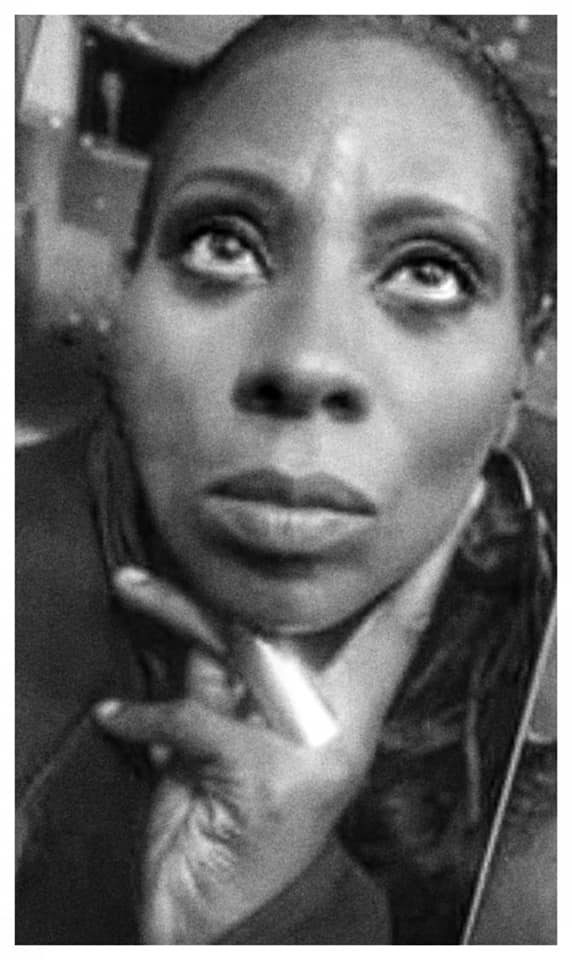THE OBSERVATION BOOTH

OP / ED & PHOTO CREDITS: ANDREA DIALECT
(ARCHIVED – TAKE 2)
“Logically, open minds make an ideal audience. Thus, such spectators in any environment would supposedly be a puppeteer’s dream. But in ‘Da Hood,’ if void of imagination, short attention spans shun supportive script. In the minds of this particular audience, real puppets don’t talk that jive talk that fosters learning and imagination, when puppets gotta spit rap lyrics 24/7 . . . How sad!” – Andrea
Pulling Strings
Jim Robinson: Puppeteer / Clown / Magician Extraordinaire

“It’s more comfortable for people to hear rap vs. other types of music in the inner city, and it’s hard to find clean, decent music out here. I used to use Bow Wow’s work a lot when he was little Bow Wow, him and Romeo. But they’ve grown up now, and their music has gotten raunchy, so it’s pretty difficult to pull over.
“I want to expose our people to more than a Hip Hop rap image or Gangsta Rap. There’s so much more to be heard and learned, other styles. I have experimented with other types of music. There’s a guy called Big Jeff that I use a lot, Craig, and company from Disney. Hope Songs which is the music of a guy from East Orange; his work is Disney-style. I’ll also take that unsolicited demo from an artist and use it if it’s befitting.
“Many of the kids’ attention spans are kinda of short, and they can’t follow the storyline unless it’s something like a video game and there’s bells and whistles sounding off continuously. Real dialog must be exchanged with children unless they suffer, and it is an issue because the vocabulary is not there.
“There is great difficulty for most when it comes to expressing who they are and what they are trying to portray because of limited vocabularies, and I’m speaking of adults. So imagine what it’s like for kids. They cannot verbalize what they feel or see and when vocabularies are limited, things tend to go over the head.
“Despite challenges, I introduce the unfamiliar to every child. I utilize folk music for that child who is familiar with it, and accordingly, I introduce it to those who aren’t. I use Raffy often, which surprisingly isn’t as popular around here. Kids really need those types of songs because they expand their imagination; hearing and observing an artist being animated in such a way fosters their ability to become creative and animated as well.
“I use a lot of big Jeff, ‘I was walking down the street, and I became a pterodactylus, I was doing this, and I became a frog.’ It is these things that make children use their imaginations and, at the same time, teaching them about the pterodactylus (Tert-a-DAK-tie-luss). After hearing about new things like that, they go to Mom and Dad and say hey, what is a pterodactylus. If Mom and Dad are unsure, they should let them know that, and when time permits, find out.”
AD: What is a pterodactyl?
JR: (chuckles) It’s that little flying dinosaur with the large wings. By the way, I am not just an entertainer as most view people of my profession. I am an educational director. It’s on my card, that’s who I am and that’s what I do; this way, kids are exposed to things that are foreign to them. Because the world is larger than, say, East Orange, Newark, or Maplewood.
AD: In one word, describe your artistry.
JR: Excitement.
AD: What is the most rewarding part of your creative form?
JR: Being able to open up new experiences for our children as so naturally when I see smiles on those faces . . . That’s the best part!
TATTERED NEWS PAGE / BLACK BOOK SERIES
DO YA KNOW THAT?
Puppeteer
(Wikipedia – https://en.wikipedia.org › wiki › Puppeteer)
A puppeteer is a person who manipulates an inanimate object, called a puppet, to create the illusion that the puppet is alive. The puppet is often shaped .. like a human, animal, or legendary creature. The puppeteer may be visible to or hidden from the audience. A puppeteer can operate a puppet indirectly by the use of strings, rods, wires, electronics or directly by their own hands placed inside the puppet or holding it externally or any other part of the body- such as the legs. Some puppet styles require two or more puppeteers to work together to create a single puppet character.
The puppeteer’s role is to manipulate the physical object in such a manner that the audience believes the object is imbued with life. In some instances, the persona of the puppeteer is also an important feature, as with ventriloquist’s dummy performers, in which the puppeteer and the human figure-styled puppet appear onstage together, and in theatre shows like Avenue Q.
The puppeteer might speak in the role of the puppet’s character, synchronizing the movements of the puppet’s mouth. However, there is much puppetry which does not use the moving mouth (which is a lip-sync innovation created originally for television where close-ups are popular). Often, in theatre, a moveable mouth is used only for gestural expression, or speech might be produced by a non-moving mouth. In traditional glove puppetry often one puppeteer will operate two puppets at a time out of a cast of several. Much work is produced without any speech at all with all the emphasis on movement.
In a shadow play only the shadows of the puppet are seen on a screen positioned between the puppets and the audience.
The relationship between the puppeteer and the puppet-maker is similar to that between an actor and a playwright, in cases where a puppet-maker designs a puppet for a puppeteer. Very often, though, the puppeteer assumes the joint roles of puppet-maker, director, designer, writer and performer. In this case a puppeteer is a more complete theatre practitioner than is the case with other theatre forms, in which one person writes a play, another person directs it, and then actors perform the lines and gestures.
Puppetry is a complex medium sometimes consisting of live performance, sometimes contributing to stop frame puppet animation, and film where performances might be technically processed as motion capture, CGI or as virtual puppet.
The Observation Booth is utilized as a space for Andrea Dialect to stumble through, which aids in life and brand development. It can also be used by readers, subjects, and features to assist or advance our world or their own. It is a peek into one’s world from the outside. It is also for the development of content.
Everything printed here is in draft form; thus, error is welcomed and to be expected. Everything is constantly evolving, is her mantra. Seeing the work in printed format is the initial step and is quite valuable and therapeutic for developing all forms. Like Everything, Andrea Dialect uses this space as a test lab for test study and a test subject.
Here you will also find influencers, professionals, and muses who are considered “clay” who lend their image to change as doing us proud who are contributors to the upward progress of human progress. It is a platform for the growth, inspiration, motivation, and development of herself, her subjects, and her readers. Enjoy!
DO YOU KNOW ANY OF OUR COMMUNITY ACCESS CONTRIBUTORS?
- If SO LET THEM KNOW THAT THEY’VE MADE THE CUT AND THEY ARE THE TALK OF LOCAL TALK THIS WEEK!
- PASS IT ON!
- LIKE, COMMENT, SHARE!


